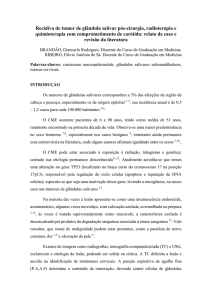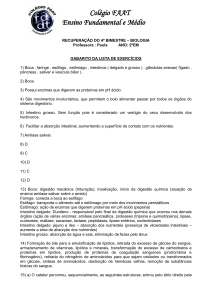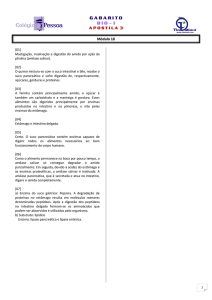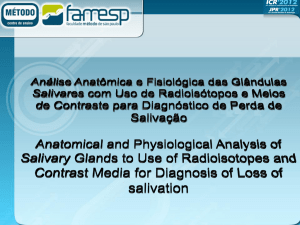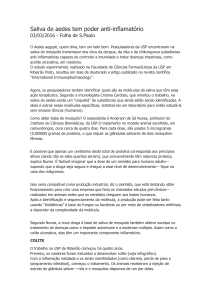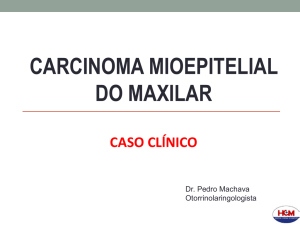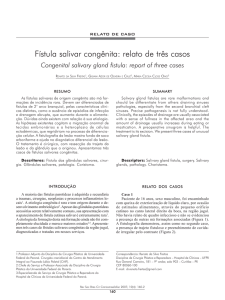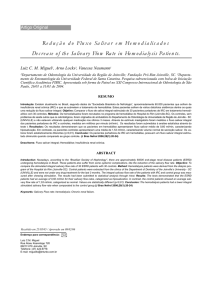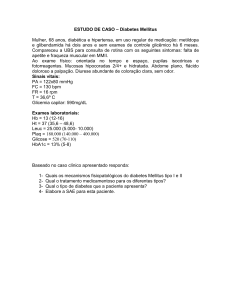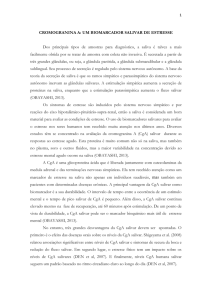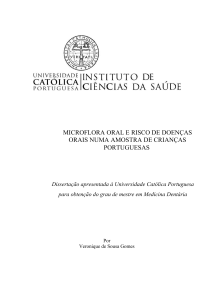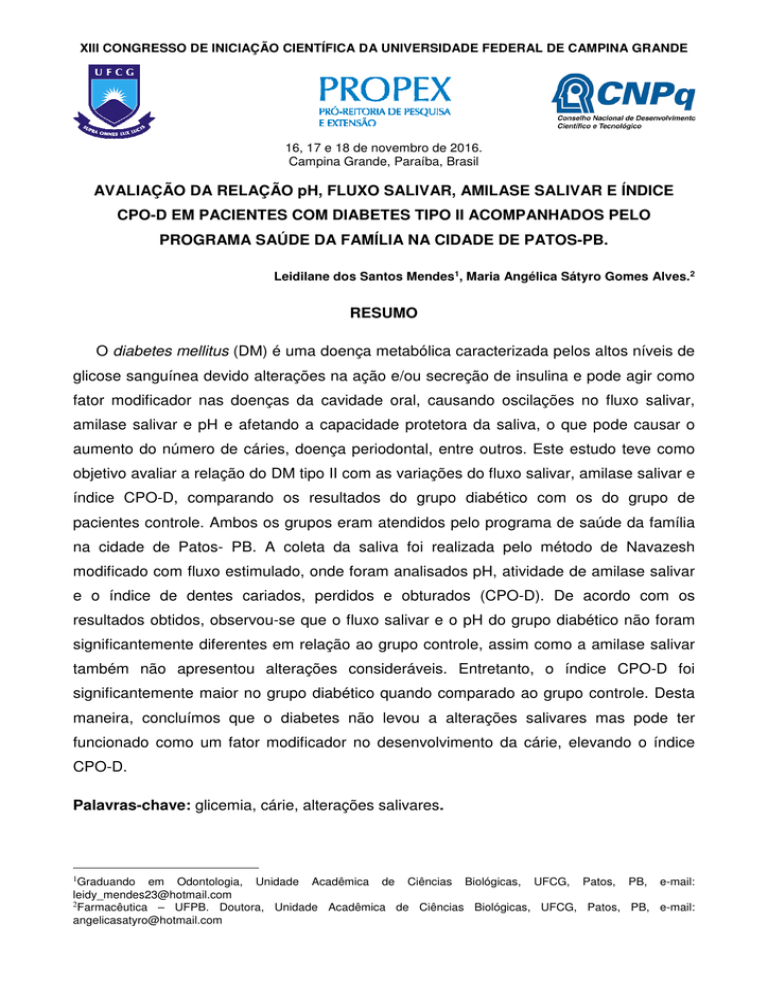
XIII CONGRESSO DE INICIAÇÃO CIENTÍFICA DA UNIVERSIDADE FEDERAL DE CAMPINA GRANDE
16, 17 e 18 de novembro de 2016.
Campina Grande, Paraíba, Brasil
AVALIAÇÃO DA RELAÇÃO pH, FLUXO SALIVAR, AMILASE SALIVAR E ÍNDICE
CPO-D EM PACIENTES COM DIABETES TIPO II ACOMPANHADOS PELO
PROGRAMA SAÚDE DA FAMÍLIA NA CIDADE DE PATOS-PB.
Leidilane dos Santos Mendes1, Maria Angélica Sátyro Gomes Alves.2
RESUMO
O diabetes mellitus (DM) é uma doença metabólica caracterizada pelos altos níveis de
glicose sanguínea devido alterações na ação e/ou secreção de insulina e pode agir como
fator modificador nas doenças da cavidade oral, causando oscilações no fluxo salivar,
amilase salivar e pH e afetando a capacidade protetora da saliva, o que pode causar o
aumento do número de cáries, doença periodontal, entre outros. Este estudo teve como
objetivo avaliar a relação do DM tipo II com as variações do fluxo salivar, amilase salivar e
índice CPO-D, comparando os resultados do grupo diabético com os do grupo de
pacientes controle. Ambos os grupos eram atendidos pelo programa de saúde da família
na cidade de Patos- PB. A coleta da saliva foi realizada pelo método de Navazesh
modificado com fluxo estimulado, onde foram analisados pH, atividade de amilase salivar
e o índice de dentes cariados, perdidos e obturados (CPO-D). De acordo com os
resultados obtidos, observou-se que o fluxo salivar e o pH do grupo diabético não foram
significantemente diferentes em relação ao grupo controle, assim como a amilase salivar
também não apresentou alterações consideráveis. Entretanto, o índice CPO-D foi
significantemente maior no grupo diabético quando comparado ao grupo controle. Desta
maneira, concluímos que o diabetes não levou a alterações salivares mas pode ter
funcionado como um fator modificador no desenvolvimento da cárie, elevando o índice
CPO-D.
Palavras-chave: glicemia, cárie, alterações salivares.
1
Graduando em Odontologia, Unidade Acadêmica de Ciências Biológicas, UFCG, Patos, PB, e-mail:
[email protected]
2
Farmacêutica – UFPB. Doutora, Unidade Acadêmica de Ciências Biológicas, UFCG, Patos, PB, e-mail:
[email protected]
XIII CONGRESSO DE INICIAÇÃO CIENTÍFICA DA UNIVERSIDADE FEDERAL DE CAMPINA GRANDE
16, 17 e 18 de novembro de 2016.
Campina Grande, Paraíba, Brasil
EVALUATION BETWEEN THE PH, SALIVARY FLOW, SALIVARY AMYLASE AND
CPO-D INDEX IN PATIENTS WITH TYPE II DIABETES ACCOMPANIED BY THE
FAMILY HEALTH PROGRAM IN PATOS-PB.
ABSTRACT
Diabetes mellitus is a metabolic disease characterized by high blood glucose levels
due to defects in insulin secretion and/or its action. It can act as a modifying factor in the
oral cavity diseases, causing disturbances in salivary flow, salivary amylase and pH, and
affecting the protective capacity of the saliva. It can may cause the increase of caries,
periodontal disease, among others. This study aimed to evaluate the relationship between
the type II DM with the changes in salivary flow, salivary amylase, pH; and CPO-D index,
comparing the results of the diabetic group with the control group patients. The family
health program in the city of Patos-PB assisted both groups. The saliva was collected by
the modified method of Navazesh with stimulated salivary flow, which were analyzed the
pH, salivary amylase activity and CPO-D index. According to the results, it was observed
that the salivary flow and pH of the saliva from diabetic group were not significantly
different comparing with the control group, as well as the salivary amylase did not show
significant changes. However, the CPO-D index was significantly higher in the diabetic
group when it was compared to the control group. It was concluded that the diabetes does
not lead to salivary alterations, but may have worked as a modifier factor in the
development of tooth decay, raising the CPO-D index.
Keywords: glycaemia, tooth decay, salivary changes.


